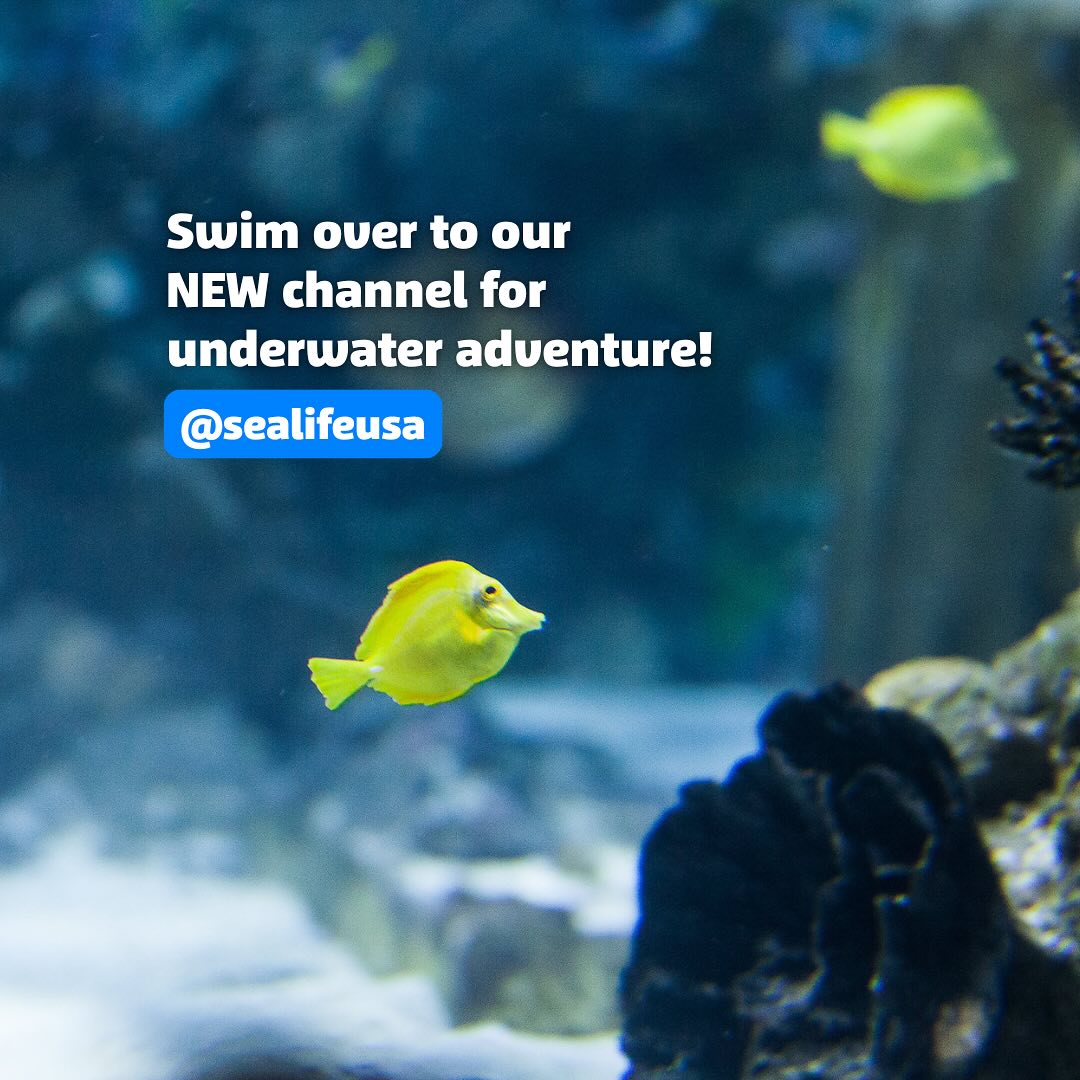- Explore the vast array of content focused on marine life conservation on SeaLifeUSA’s social channel, @sealifeusa.
- Delve into the role of zoology and zoo management in supporting wildlife conservation efforts.
- Learn about the latest research and scientific endeavors in the field of marine biology and wildlife preservation.
- Understand the importance of public education and awareness in fostering environmental stewardship.
- Discover how social media can play a pivotal role in promoting conservation efforts and engaging global communities.
SeaLifeUSA’s main social channel, @sealifeusa, serves as a vital platform for sharing knowledge about marine life conservation. This channel curates content that spans from enlightening documentaries to interactive sessions with marine biologists, offering an ocean of information to those eager to learn about and contribute to wildlife preservation.
The primary focus of this initiative is to foster an understanding of the intricate relationships between marine species and their habitats. By exploring @sealifeusa, followers gain insights into the diversity of marine ecosystems, the behavior and adaptations of various species, and the threats these environments face. This content doesn’t just inform; it inspires action by illustrating how individuals can make a difference, whether through supporting conservation efforts financially or adopting sustainable living practices.
Zoology, the study of animal biology, serves as a cornerstone for these conservation efforts. Researchers and specialists in this field provide essential data that guides the management and protection of endangered species. Zoos and aquariums play a crucial role in this endeavor by offering a sanctuary for species at risk while also serving as centers for research and public education. Through captive breeding programs, habitat restoration projects, and reintroduction efforts, they contribute significantly to the preservation of biodiversity.
In zoo management, maintaining animal welfare and promoting educational outreach are fundamental. This involves creating environments that simulate natural habitats and implementing enrichment programs to meet the physical and psychological needs of the animals. Additionally, zoos often collaborate with international conservation organizations to enhance global conservation strategies. Their expertise in animal husbandry and veterinary care is invaluable to the success of these partnerships.
One area where significant progress is being made is in marine biology research. Scientists are continually discovering new aspects of ocean life, advancing our understanding of species interactions and ecosystem dynamics. Cutting-edge technologies such as satellite tracking and genetic analysis are used to monitor marine populations and their movements, providing data that inform conservation policies and initiatives. These tools are essential in identifying critical habitats that require protection and in evaluating the impacts of climate change on oceanic ecosystems.
Public engagement is another crucial element of SeaLifeUSA’s mission. By utilizing social media platforms like @sealifeusa, conservation organizations can reach a broad audience, disseminating information quickly and effectively. Social media allows for real-time updates on conservation projects, creating transparency and fostering a sense of community among followers. This digital approach enables two-way communication, encouraging the public to participate in discussions, share experiences, and contribute ideas that could shape future conservation efforts.
Education through social media is not just about raising awareness; it is about equipping people with the knowledge and resources they need to make informed decisions. Campaigns often include practical advice on how to reduce one’s environmental footprint, from choosing sustainable seafood to participating in beach clean-up activities. By inspiring individual actions, these campaigns aid in mitigating the broader challenges facing marine environments today.
Social media’s role in conservation is far-reaching, going beyond education to provide a platform for advocacy and fundraising. By showcasing the challenges facing marine life, organizations can mobilize support for conservation programs and policy changes. This can lead to increased funding for crucial research and protective measures. For instance, crowdfunding campaigns or targeted donation drives can support projects like coral reef restoration or anti-poaching efforts.
The presence of real-time content on social platforms such as @sealifeusa facilitates storytelling that resonates with a global audience. Engaging narratives about animal rescues, rehabilitation, and success stories from the wild capture attention and build emotional connections with viewers. These stories highlight the positive outcomes of conservation work, reinforcing the idea that collective efforts contribute to tangible results.
Furthermore, social media influences public opinion and can drive behavioral change on a larger scale. By creating viral content around conservation messages, these platforms raise awareness and alter perceptions about issues such as plastic pollution and overfishing. Campaigns that challenge viewers to change consumption habits or advocate for sustainable policies help shift societal norms towards more eco-friendly practices.
Incorporating scientific lexicon into everyday discourse, social channels like @sealifeusa demystify complex topics, making science accessible. They serve as conduits for translating intricate research findings into digestible insights that non-experts can relate to and act upon. This aspect of science communication is crucial for maintaining public interest and engagement in wildlife conservation.
The collaborative nature of social media allows diverse voices to contribute to conservation dialogue, including scientists, activists, and the public. This multiplicity of perspectives enhances problem-solving approaches and encourages innovation. By facilitating global conversations, platforms such as @sealifeusa provide opportunities for cross-cultural exchange, helping to build a unified approach to tackling environmental challenges.
Ultimately, the content shared on SeaLifeUSA’s channel @sealifeusa represents a comprehensive resource for those fascinated by zoology, dedicated to wildlife conservation, or simply curious about the natural world. This unique intersection of education, advocacy, and engagement on digital platforms strengthens collective efforts to preserve the rich diversity of life within our oceans.
*****
Source Description
Don’t forget – there’s a whole ocean of content waiting for you on our main social channel @sealifeusa!


